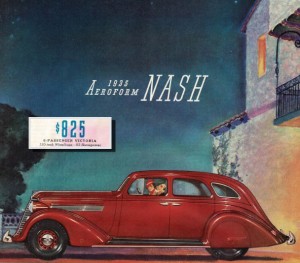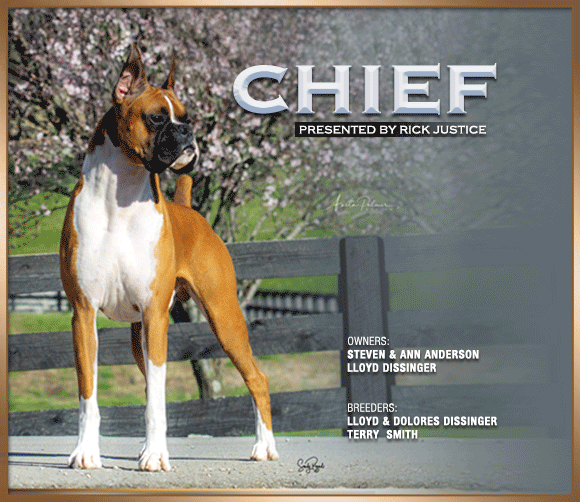Remembrance of Doggy Things Past – Our First Dog Show
By Herman L. Felton
From the archives of The Canine Chronicle, 1996
Early on a Sunday morning in August 1935, Judy, (my wife of one year plus a few months), her teenage brother, Herbert, our young Doberman Pinscher, Mephisto of Westphalia, and I piled into our Nash roadster. Judy, Mephisto and I sat on the inside seat, Herbert occupied the rumble seat outside.
We were leaving from our farm located between Far Hills and Liberty Corner to Somerset County, New Jersey to take part that day in the Staten Island, NY Kennel Club dog show. We had attended dog shows previously, but this was to be our first time as exhibitors. We were, as you can understand, excited and exhilarated.
The forty-mile-plus drive to Staten Island was almost traffic free and we were all feeling pretty good as we tooled along on the avenue leading from the bridge crossing at the southern end of the island to the show grounds. Suddenly a motorcycle cop pulled up alongside, waved us over, and informed me that he was going to ticket me for driving over 35 miles per hour in a 25 mile per hour zone.
“Not even the prefix on the top breeding kennel in any breed in the registered name of your dog is a guarantee of show quality.”
Disaster! Not only would the monetary fine be very onerous in those Depression days but, being out-of-staters, he would probably make us follow him to some Justice of the Peace for proper legal action. The resultant loss of time would likely make us late for benching Mephisto at the show grounds and, horrors, late for his class. We explained this to the policeman, most earnestly.
Our very apparent distress, our youthfulness, and the presence of the Doberman that had been the object of his admiring and respectful gaze combined to engender a change of heart in the cop who closed his ticket book and said, “Hell, I would probably drive at that speed myself–go ahead and good luck at the show” and waved us on. A gigantic omen of impending victory!
When we arrived at the show venue, we had no trouble locating the Doberman benching section. Although it was still early, many of the dogs were already in their assigned benching spaces and the growling, snarling and barking by the Dobes led us directly to them. We put Mephisto in his space and attached the shortish leather lead to his collar and to a metal hook at the bottom of the bench rear wall to be sure that he didn’t jump off the bench to say “hello” to a passing dog or human.
During the remainder of the day, until we were free to leave at 3 p.m., and except when I was actually showing him, one of us would remain with Mephisto while the others observed the various benched dogs of all breeds or watched the judging going on in the rings. It was really quite educational, especially for novices. So much to see, so much to learn!
Our immediate neighbor in the benching area was a man named Miller. The Doberman people we had encountered previously were all white-collar types (some tending toward the aristocratic) but Miller was definitely blue-collar; in the South he would be referred to as a redneck. While other breeders used kennel prefixes such as Westphalia, White Gate and Ponchartrain, his dog’s names began with “Trail’em.” Trail’em Lucinda was, I recall, his top bitch; none of this “von” or “von der” for Miller. Although with German or Dutch ancestors not far back in their pedigrees, his dogs were ‘All American’!
Miller was quite blunt and direct spoken and considerably defensive and defiant with reference to his fellow Doberman breeders. He reminded me of the dour outsider in Ollivant’s book “Bob, Son of Battle.”
Westphalia was a prestigious Doberman breeding kennel in those days and when we bought Mephisto from them for $50 (with time payments) we knew we were not getting a good representative show dog with the capability of winning a championship. We realized that he was somewhat low-legged and long-bodied, but so were many Dobe winners in those days. He was also rather short-necked – but the age of elegance for the breed had not yet dawned in the mid-1930s.
What we found most disturbing was the fact that his front feet turned outward (a condition that the Germans called “a French front”) and that the slope of his pasterns was more appropriate for a German Shepherd Dog than for a Doberman. Mrs. Ellie Buckley, manager of Mr. Fleitmann’s kennels, assured us that his front “would straighten and come up” as he matured.
When we asked Mr. Miller about this at the Staten Island Show, he stated flat out, “if he’s not up on his front by now, he’s never going to come up on his front.” Straight talk from a straight talker. Other breeders we talked to at the show were somewhat more diplomatic or evasive, but the net content of their answers to our questions was in agreement with Miller’s assessment.
Well, anyway, Mephisto had only one competitor in his class and won the blue ribbon. We were duly happy about this but we drove back to the farm that evening with confirmation of our worst expectations: Our pride and joy, our first purebred Doberman, was not really of good show quality. Not even the prefix on the top breeding kennel in any breed in the registered name of your dog is a guarantee of show quality. Litters composed of all show quality dogs are rarities; exceptions rather than the rule. Live, experience and learn.
Thus began a hobby, avocation and obsession for Judy and me which still exists today – 59 years later.
In some future piece I hope to tell you how I, the rank tyro amateur, handled our second Doberman, Karen van Barneveld, a bitch, to a big win over a Fleitmann import handled by Harold Correll, the first professional handler licensed by the AKC, resulting in a temporary hiatus in the friendship between F. F. H. Fleitmann (Westphalia) and Howard K. Mohr (White Gate), two of the giants in Doberman Pinscher breeding, importing and exhibiting during the early days of the breed in the United States.
Short URL: https://caninechronicle.com/?p=183324
Comments are closed














